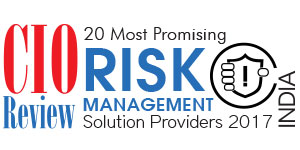 1. What message would you like to convey to our audience of CIOs & CXOs about the Life Science Industry?
1. What message would you like to convey to our audience of CIOs & CXOs about the Life Science Industry?This is a unique time for the life science industry as it is at the cusp of transforming not only how medicines are developed but also how they are delivered to patients around the world. Technology will propel this evolution by enabling complex analytics and predictive modeling; however technology alone is not enough. To fully leverage technology advancements, solutions require the right combination of specialized scientific, regulatory and technical expertise. Companies that recognize and plan for the integration of these disciplines, and apply them to the challenge at hand, will see greater success in managing the lifecycle of their products. Organizations have to prioritize where to allocate their resources and it is not surprising that most companies focus on new drug discovery rather than an integrated strategy. Specialized outsourcing partners like Sciformix help fill this gap in a cost effective manner, making a profound impact on operations in terms of insight, quality and compliance. By combining the team's functional knowledge in safety and risk management (in clinical trials and post-marketing) with the acquired technology and process skillsets, Sciformix has the ability to help organizations that are looking to innovate and improve their operations via technology.
2. With global regulations becoming more complex, Companies are paying more focused attention to product safety in their pre-market approval process as well as post-marketing risk evaluation and mitigation strategies. How do your offerings in Safety and Risk Management aid this?
Companies in the pre-market phase often have their data scattered amongst multiple CROs making it arduous to access data in an integrated way. Organizations may not even be able to account for the number of adverse event cases they have processed in a year or in the course of a clinical trial, thus impeding progress. This proves to be a hindrance, particularly at the time when consolidation of data is required for regulatory filings so as to ensure it has been obtained from all sources. Sciformix can assist businesses to amalgamate their data and look at it holistically, thereby maximizing the probability of success of the filing.
In contrast, when it comes to products in the post-marketing phase, most companies typically have a pharmacovigilance (PV) platform in place to comply with regulations. Businesses are mature with processes, workflows and reporting being defined and initiatives in place to optimize operations. Integration of safety data is a significant challenge as more established organizations have to manage and mitigate the nuances of M&A and partnering activities that enable them to penetrate and expand their market base. The amount of consolidation and integration of safety data is extensive, requiring significant time, money and resources with the skill set to do it right. Providing a solution that expeditiously integrates and shares data in real-time is key.
3. Tell us about your LEAN process model and how it is helping Sciformix to continuously implement improvements that benefit clients. Share a success story where the DMAIC approach proved transformative for the client.
A leading global pharmaceutical company had an extremely complex pharmacovigilance (PV) process comprising of 390 process steps. This included data sanitization from three different data sources and processing of cases in a legacy PV application, which as a result of its process design, added to the workload and led to multiple workarounds at various stages. This impacted Turn-Around- Time (TAT) and put regulatory compliance at risk.
Sciformix implemented the Define, Measure, Analyze, Improve and Control (DMAIC) methodology to improve the process. DMAIC is a process used to analyze and improve existing processes. Post a detailed process mapping and brainstorming with the client, it was realized that out of the 390 process steps, 31 steps could be classified as Non Value Add and could be eliminated entirely. Additionally, there were 119 steps for which significant effort reduction could be achieved. Once the pain points were defined and measured, we were able to diagnose the parts of the process where the most room for improvement existed.
The initial overall lead time of 11 days was trimmed down to nine days and helped save 12 percent of the client's time that could be invested elsewhere. In addition, the number of process steps were scaled down by 10 percent resulting in a reduction of more than 30 percent in to and fro of work by re-sequencing the workflows.
4. Aggregate reporting regulations have recently undergone a revision across the European Union. Revisions will soon be mandated in other regions to further strengthen the signal detection system and optimize the use of resources across the Pharmacovigilance network for the benefit of public health. How does Sciformix intend to drive this revolution in trends?
One of the biggest challenges in the industry is that regulations across the globe are not standardized and often times divergent. Hence, organizations end up repurposing their documents for each country, which is time consuming and resource intensive. Organizations can be slow to embrace new requirements and harmonize their approaches, often sticking to "˜the way we've always done it' ideology despite the fact that evolving regulations can help in making their processes more efficient. Sciformix works with clients and to help them adopt new requirements and apply them globally. This allows clients to work more effectively and repurpose the same documents across multiple regulatory authorities.
5. How different is Sciformix's engagement model and how does it deliver clients with consistent, reliable and quality results while acting as an extension to the client's team?
Sciformix is dedicated to providing clients outstanding services and solutions, fueled by a relentless commitment to quality. Our engagement model is structured to earn the trust and confidence of clients and this is done at the start by working with clients to understand their needs, requirements, existing processes, vision and goals. Our delivery teams, SMEs, and thought leaders then develop a value-add strategy to meet and exceed these needs. This strategy then gets incorporated into a solution that is unique for each client.
The delivery structure for each engagement comprises of a combination of dedicated delivery resources and experts who are committed to serving the client's needs. The team is led by 3 individuals: a Client Partner, a Technology Delivery Partner and an Operational Delivery Partner. Thought leaders provide industry expertise across all functional areas, along with strategic direction and oversight in training and quality management. The Client Partner is responsible for the overall initiative and acts as a central conduit to develop and channel relevant solutions and models tailored to the needs of each client. Each business has a dedicated technology and operations delivery team that implements the standard Sciformix methodologies, technologies and processes, providing quality output customized to the client's requirements. This comprehensive and integrated service model ensures that seamless collaboration and sharing is executed, and fosters Sciformix's ability to provide the technology needed for scientific insight and knowledge. The team ensures the extension of personalized service with consistent quality and predictability with clients reaping the best of both worlds"“transformative technology and processes from a single vendor.
4. Aggregate reporting regulations have recently undergone a revision across the European Union. Revisions will soon be mandated in other regions to further strengthen the signal detection system and optimize the use of resources across the Pharmacovigilance network for the benefit of public health. How does Sciformix intend to drive this revolution in trends?
One of the biggest challenges in the industry is that regulations across the globe are not standardized and often times divergent. Hence, organizations end up repurposing their documents for each country, which is time consuming and resource intensive. Organizations can be slow to embrace new requirements and harmonize their approaches, often sticking to "˜the way we've always done it' ideology despite the fact that evolving regulations can help in making their processes more efficient. Sciformix works with clients and to help them adopt new requirements and apply them globally. This allows clients to work more effectively and repurpose the same documents across multiple regulatory authorities.
5. How different is Sciformix's engagement model and how does it deliver clients with consistent, reliable and quality results while acting as an extension to the client's team?
Sciformix is dedicated to providing clients outstanding services and solutions, fueled by a relentless commitment to quality. Our engagement model is structured to earn the trust and confidence of clients and this is done at the start by working with clients to understand their needs, requirements, existing processes, vision and goals. Our delivery teams, SMEs, and thought leaders then develop a value-add strategy to meet and exceed these needs. This strategy then gets incorporated into a solution that is unique for each client.

Organizations have to prioritize where to allocate their resources and it is not surprising that most companies focus on new drug discovery rather than an integrated strategy. Specialized outsourcing partners like Sciformix help fill this gap in a cost effective manner, making a profound impact on operations in terms of insight, quality and compliance
The delivery structure for each engagement comprises of a combination of dedicated delivery resources and experts who are committed to serving the client's needs. The team is led by 3 individuals: a Client Partner, a Technology Delivery Partner and an Operational Delivery Partner. Thought leaders provide industry expertise across all functional areas, along with strategic direction and oversight in training and quality management. The Client Partner is responsible for the overall initiative and acts as a central conduit to develop and channel relevant solutions and models tailored to the needs of each client. Each business has a dedicated technology and operations delivery team that implements the standard Sciformix methodologies, technologies and processes, providing quality output customized to the client's requirements. This comprehensive and integrated service model ensures that seamless collaboration and sharing is executed, and fosters Sciformix's ability to provide the technology needed for scientific insight and knowledge. The team ensures the extension of personalized service with consistent quality and predictability with clients reaping the best of both worlds"“transformative technology and processes from a single vendor.







